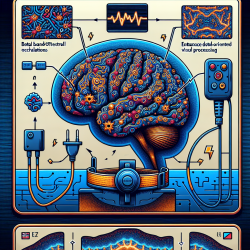The study titled "Perceived caregiver’s burden among children with autism spectrum disorder in central Nepal: a cross-sectional study" provides invaluable insights for practitioners working with children with Autism Spectrum Disorder (ASD). The research, conducted at the Centre for Autism in Kathmandu, Nepal, underscores the significant psychosocial burden experienced by caregivers, predominantly mothers, of children with ASD. This blog aims to distill key findings from the study and offer actionable recommendations for practitioners to improve their skills and encourage further research in this critical area.
Key Findings
- The majority of caregivers were mothers (54.16%), followed by grandparents (29.16%) and fathers (10.8%).
- Most caregivers perceived moderate to severe burden (47.5%), while a smaller proportion experienced mild to moderate burden (37.5%).
- The degree of caregiver burden was significantly correlated with the level of ASD in the child.
Implications for Practitioners
The findings from this study highlight the need for a holistic approach in managing ASD, one that considers not just the child but also the well-being of the caregivers. Here are some actionable steps practitioners can take:
1. Comprehensive Care Plans
Develop care plans that include support for caregivers. This can involve providing resources for mental health support, respite care, and financial counseling. The study showed that caregivers, especially mothers, face significant stress and mental health challenges, which can be mitigated through comprehensive care plans.
2. Training and Education
Offer training sessions for caregivers to better understand ASD and effective management strategies. Education can empower caregivers, reducing their perceived burden and improving their ability to care for their children.
3. Community Support Networks
Facilitate the creation of support groups where caregivers can share experiences and coping strategies. The study highlighted the role of grandparents in caregiving, suggesting that extended family networks can be a valuable resource.
4. Tailored Interventions
Customize interventions based on the severity of the child's ASD. The study found a significant correlation between the level of ASD and caregiver burden, indicating that more severe cases require more intensive support.
Encouraging Further Research
The study provides a foundation for further research into the psychosocial burdens faced by caregivers of children with ASD. Practitioners are encouraged to contribute to this growing body of knowledge by conducting their own research and sharing their findings. Areas for future research could include:
- Comparative studies between urban and rural caregivers to identify specific challenges and resources needed.
- Longitudinal studies to track changes in caregiver burden over time and the effectiveness of different intervention strategies.
- Exploratory studies on the impact of socioeconomic status and educational background on caregiver burden.
By continuing to explore these areas, practitioners can develop more effective, data-driven strategies to support both children with ASD and their caregivers.
To read the original research paper, please follow this link: Perceived caregiver’s burden among children with autism spectrum disorder in central Nepal: a cross-sectional study.










